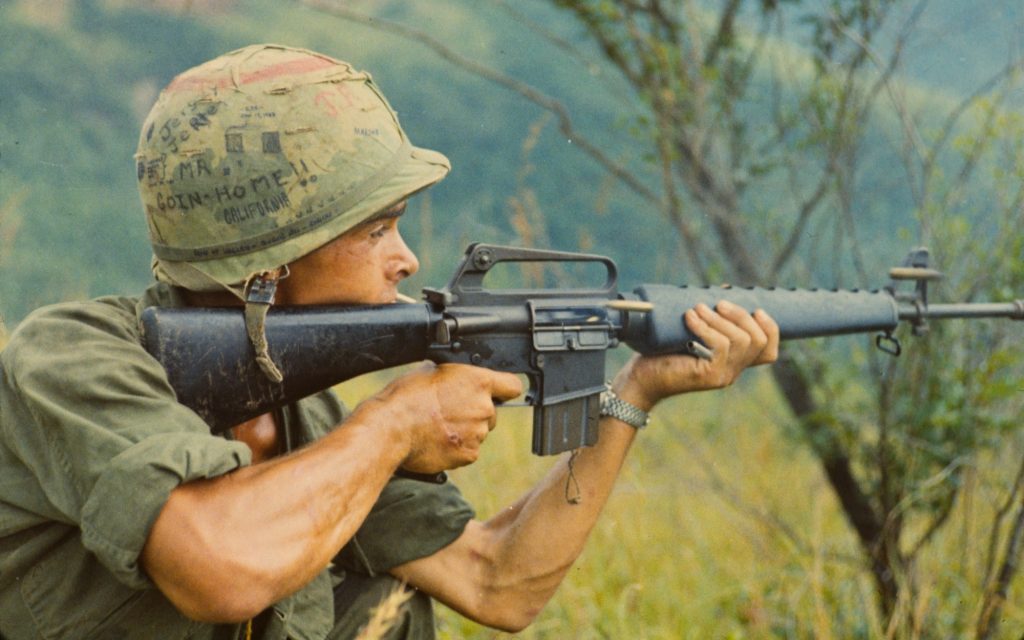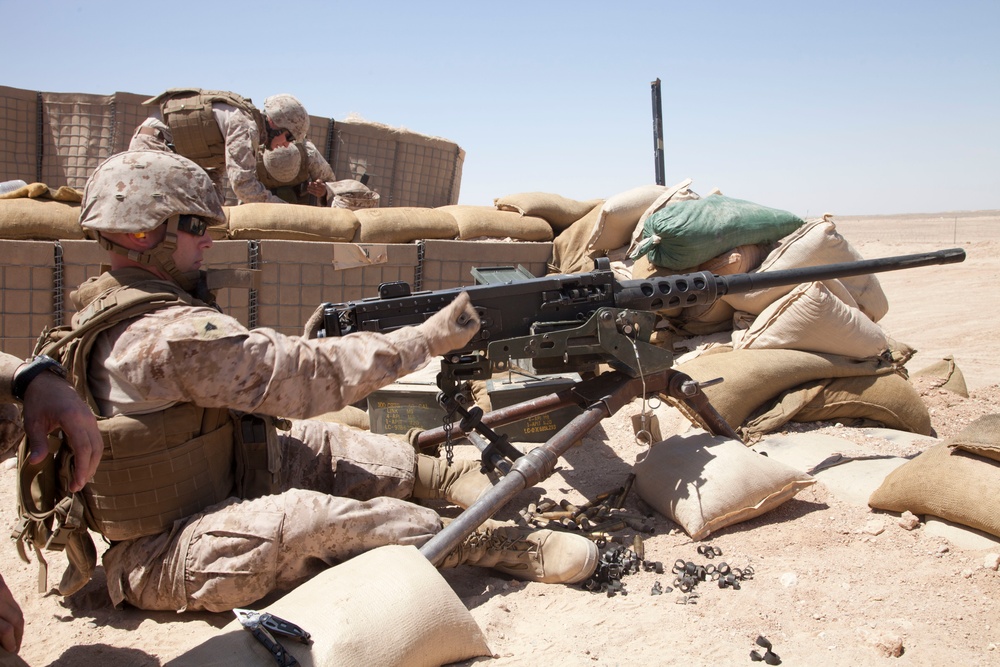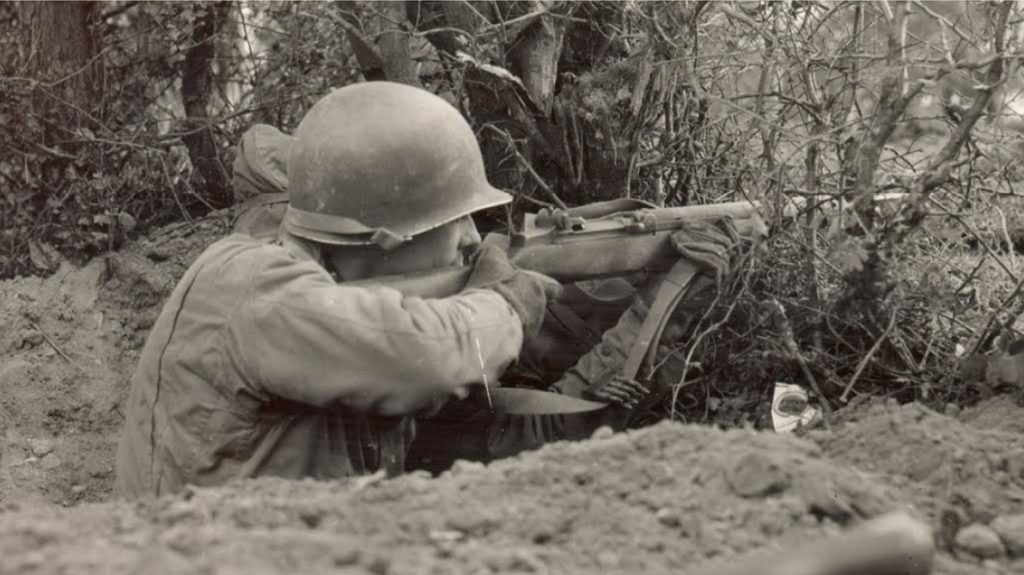As we all know, there are many myths about firearms out there, including silly things like stopping power and the greatness of the M14 in the modern world. How many times have you heard someone say that just racking a shotgun will be enough? Those are fun to talk about and debunk, but today, we’ll take a purely military approach. We need to look at some small arms myths that come out of the United States military and do some serious debunking.
The Mattel M16
If you get enough old dudes in a room together and ask about the Mattel M16, you’ll surely hear a story about how some cousin’s girlfriend’s little brother had an M16 made by Mattel in Vietnam. Another guy might swear up and down that the M16 he was issued in boot camp had its stock and handguard made by Mattel.

It’s somewhat easy to believe when we look at the M16 in the context of the era in which it was introduced. Fighting rifles in the early 1960s were wood and steel, like the M1 Garand and the M14 rifle. This new aluminum and polymer design was so light and small that it felt like a toy. As the owner of some actual Colt M16A1 furniture, I’ll admit that it does feel rather flimsy and fragile. I can understand the misunderstanding.
In reality, Mattel never made any parts for the M16. The company will straight up say they never did. Plus, no contract has ever been assigned to Mattel for M16 parts, and no Mattel M16 parts have ever shown up. If an authentic Mattel piece of furniture did exist, it would fetch a ton of money. Mattel did make a toy M16 known as the Marauder, and it’s likely between the Marauder and the like feel of the first M16s that the myth started.
The .50 BMG’s Shockwave
I learned this myth firsthand in boot camp in 2008. My Senior Drill Instructor, who had never deployed and was a Marine Corps brig guard, told us that the .50 BMG was so powerful that it created a shockwave. That shockwave was so powerful that it could rip a man’s arm if it passed by too close.

That’s a fun myth that was thoroughly debunked a few months later at SOI during machine gun school. In a rather not-so-polite way, it was stated that anyone who said and believed that had a mental disability. The .50 BMG is very powerful, but it’s not throwing out a shockwave powerful enough to do anything.
In fact, Matt at Demolition Ranch built a house of cards and fired a .50 BMG through the gaps. The shockwave didn’t even bother the cards. It’s just a silly myth related to a very capable and powerful caliber. There is a whole other myth about the Geneva Convention and the .50 Cal, but we ain’t got time for all that.
The AK is a Copy of the STG 44
If you were to look at pictures of an AK and an STG 44, it would be easy to assume the Russians just ripped off the Germans. Heck, they imprisoned one of the minds behind the STG 44, so why wouldn’t they exploit him? Look at the two! The curved magazines and sight profile give the two guns a similar appearance.

Admittedly, both use a long-stroke gas piston system, but that wasn’t exclusive to the STG 44. Guns like the M1 Garand had a long-stroke gas piston system. Since we mentioned the M1 Garand, it’s easy to argue the M1 Garand has more in common with the AK-47 than the STG 44. The AK uses a rotating bolt, making it a good bit different than the STG 44.

The guns even break down differently for field stripping. Mikhail Kalashnikov personally stated he used design elements from American firearms. He took influence from the M1 garand and M1 Carbine, as well as the Thompson SMG. Other than a vaguely similar silhouette, the two guns are fairly different.
The Ping of the M1 Garand
The M1 Garand was the first successful semi-auto rifle to be fielded by a major military force. The famed rifle had an amazing reputation amongst troops, and Americans wielded it well. The M1 Garand used an internal magazine and was fed from eight-round en bloc clips. When the shooter ran dry, the clip would automatically eject and create a neat little “ping” noise.

That ping has since been made famous by movies and video games. The combination of early Call of Duty and Medal of Honor games installed that sound in my mind forever. Further, the “ping” has also been said to be a telltale sign you are out of ammo!
According to our myth, the Germans or Japanese would wait to hear the ping before rushing a soldier or Marine.
In reality, that’s a bit far-fetched. How would one hear an individual ping in a gunfight? Gunfights are loud. Second, no soldier or Marine is alone. This also assumes the fight is always at super close range. If an enemy did hear the noise and rushed the soldier who had reloaded, he’d be pumped full of lead.
The Bren Gun Was Too Accurate
The old Bren gun was a British light machine gun that came by way of Czechoslovakia. The Brits tested several LMGs after WW1, and the Czech ZB vz. 26 made its mark. After some changes and refitting, the gun became the Bren. BR stands for Brno, the Czech city where the original ZB vz. 26 originated. The EN in Bren came from Enfield, where the gun would be manufactured.

The Bren went on to serve from the 1930s up until 1992. It was a fantastic light machine gun or automatic rifle (however you want to classify it). It was well known for its reliability, durability, and accuracy. It was reportedly so accurate that it couldn’t be a good machine gun. The gun was too accurate, and the beaten zone was way too small!
Without a doubt, the Bren was accurate, especially for its era. However, the idea that it was “too accurate” is just silly. An open-bolt, a fully automatic weapon, is not going to be so absurdly accurate that it can’t be used as a machine gun. If so, it would still be an absurdly valuable weapon, and the design would have been copied the world over.
The M1 Carbine and Frozen Chinese Coats
The M1 Carbine wasn’t the first assault rifle, but it came close. It was called a light rifle. The little gun was originally designed to arm troops who weren’t on the front lines. It would be more capable than a pistol but much lighter and shorter than the M1 Garand. It turned out to be an excellent combat rifle for short to moderate-range engagements.

It served well in World War II, but when it got to Korea, it became the subject of a myth regarding the .30 Carbine cartridge. The myth states that the round was so weak that it failed to penetrate the thick and often frozen Chinese coats worn by the enemy. That’s right, decades before body armor was issued the world over, all you had to do was freeze Chinese-made coats.
In real life, plenty of people have replicated the M1 Carbine shooting frozen Chinese coats test. Some have gotten pretty ridiculous. The little round was hot and flew at the speeds of a .357 Magnum. At close range, a coat wasn’t going to stop it. The myth likely comes from the fact that soldiers might have been missing or even using the little carbine at ranges beyond its capabilities.
Myth Busted
Man, I miss Mythbusters. They had lots of great episodes revolving around firearms and explosives. Sadly, I don’t think they ever did a military small-arms episode. You’ll just have to deal with me for those hot, juicy servings of facts! I hope you’ve enjoyed this off-brand episode.

